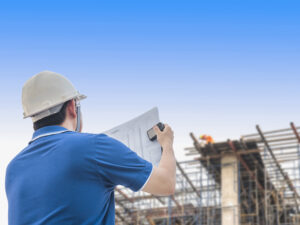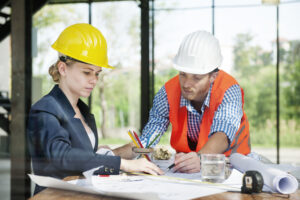Designing buildings is a detailed process. It is needed to make safe, durable, and functional buildings. Every step in planning is crucial. They ensure the project is a success. They go from the first ideas to the finished building. Let us look at the specific steps that go into designing a building’s structure:
1. An Introduction to Designing Building Structures
All building projects start with structural design. It includes planning, analyzing, and assembling parts. These parts must support and withstand loads and forces. The goal is to combine engineering principles, architectural beauty, and practical needs. This combination will make the building work.

2. Learn about the structural design of a building
ATo be good at structural design, you must know a lot about how structures work. You must know about materials and building. When thinking of design ideas, engineers have to consider things. They must think about the building’s purpose. They must also think about how many people will use it, the environment, and the budget.
3. The First Steps in Designing a Building’s Structure
The first step in the process is a full site study that looks at the geology, environment, and terrain. Engineers look at the site’s limits and seismic risks. They also look at the soil’s condition. This helps them plan and choose the right building systems and materials.
4. Phase of conceptual design
During the design process, engineers make rough ideas. They base these on the project’s needs and the client’s wants. They look at many design options. They take into account building shape, space layout, structural systems, and materials. This is to get the best performance and look.
5. The Phase of Detailed Design
Engineers convert the concept into a full set of building documents. They do this during the detailed design phase. This includes doing calculations. You do them to ensure the plan meets the rules for safety, stability, and code compliance. To help with building, detailed drawings, specs, and schedules are made for materials.
6. Following the rules and codes for buildings
Building codes and laws set minimum standards for safety, integrity, and performance. Engineers need the building permits and approvals. To get them, they must ensure that their plans follow all local, national, and foreign rules. They must also follow codes and specs.
7. Working together and talking to each other
It is key for all in the project to work together and talk clearly. They must do this during planning. Engineers work with architects, builders, developers, and the government. They make sure the building’s structure meets the needs of the architecture. It must also meet the needs of its functions and the budget.
8. Look over and change Design
Studies and evaluations are done to see how well the structure works, how efficient it is, and how easy it is to build. We carefully consider stakeholders’ feedback. We make any needed changes to improve the plan, address concerns, and lower risks. We make these changes before construction starts.
9. Finishing up and getting approval
Once the design is complete, engineers put it together. They send in detailed design papers. Regulators look them over and approve them. Getting permission to build means working with regulators. You apply for permits and handle any other needs or changes.
10. Thoughts for the Construction Phase
During the building phase, engineers make sure the design is carried out well and to the plans. They do this by overseeing, controlling quality, and providing technical support. They work with contractors, subcontractors, and construction teams. They handle problems, find solutions, and ensure the work matches the design.
11. Evaluation after construction
Engineers do post-construction evaluations. They check how well the building works, how long it will last, and how many functions it has. This means checking the building for problems, flaws, or changes in the plan. Then, do any needed repairs or upkeep. This is to make sure it works well for a long time and keeps people safe.
12. Why it’s important to keep learning and getting better
New technologies, materials, and methods are always coming out in structural engineering. To create new, lasting solutions, engineers need to stay involved. They need to stay educated about the latest news. They need to learn the best ways to do things and the standards of the industry.

13. Trends in Building Structural Design for the Future
The design of buildings will change. It will change based on new technology, trends, and desires in society. To meet 21st century needs, new technologies like Building Information Modelling (BIM) and advanced computer tools are changing how structures are planned and built. They also use sustainable materials and resilient design strategies.
Conclusion
Designing building structures is long and complex. It needs people from different fields to work together. They need technical knowledge and to think of creative ways to solve problems. Engineers can make structures that meet legal, aesthetic, and functional needs. They can also improve the built environment’s safety, durability, and resilience. They do this by using a methodical approach. They are open to new ideas and stick to best practices and standards.
